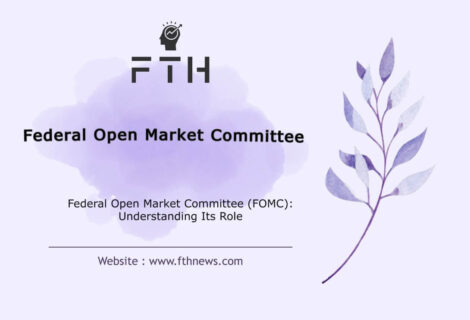
Balance of Payments (BOP): What is it, Components, and Importance
In the intricate world of global economics, the concept of “Balance of Payments (BOP)” plays a pivotal role in shaping the financial landscape of nations. This blog post aims to demystify the complexities surrounding the Balance of Payments, offering readers a comprehensive guide that not only elucidates the key components but also provides valuable insights into its significance.
What is a Balance of Payments (BoP)?
The Balance of Payments (BoP) stands as a fundamental pillar in deciphering a nation’s economic engagements on the global front. It serves as a meticulous account, meticulously documenting a country’s financial exchanges with the international community.
This economic compass captures diverse transactions, offering a holistic view of a nation’s economic health and global interconnectedness.
Trade Balance:
At its core, the BoP captures the essence of a nation’s trade dynamics. The trade balance component scrutinizes the exchange of goods and services on an international scale. The trade balance reveals economic intricacies, whether a country is exporting manufactured goods or importing essential commodities.
Financial Flows:
Beyond the tangible exchange of products, the BoP meticulously tracks financial flows that traverse international borders. This includes investments, loans, and capital movements—essentially, the ebb and flow of financial resources that shape a nation’s economic landscape. Unraveling this aspect of the BoP sheds light on a country’s financial prowess and its attractiveness to global investors.
Monetary Transfers:
The Balance of Payments (BoP) is all-encompassing, covering not only commercial transactions but also monetary transfers like remittances and foreign aid. It serves as an intricate economic storyteller, delving into the humanitarian and developmental aspects of a nation’s global interactions. Beyond statistics, the BoP reflects the heartbeat of economic globalization, emphasizing the interconnectedness of nations in a dynamic global economy.
As we explore each BoP component, we uncover economic nuances shaping a country’s international position. From trade imbalances to financial strategies, the BoP is a critical tool for policymakers, economists, and businesses, offering profound insights into a nation’s economic standing on the global stage.
Key Components of Balance of Payments:
Unraveling the Economic Tapestry
Current Account: Navigating the Ebb and Flow of Economic Exchange
The current account stands as the economic nexus where the intricate dance of global trade, income, and current transfers unfolds. This dynamic component serves as a nation’s economic pulse, providing a comprehensive snapshot of its international commercial footprint. We’ll explore the core of economic exchange, dissecting how the current account—encompassing trade in goods and services, income generation, and current transfers—impacts a nation’s overall well-being. Understanding the current account nuances offers profound insights into a country’s economic health and global interconnectedness.
Capital Account: Illuminating the Path of Financial Flows
The capital account, a realm of financial intricacies, unfolds a nation’s economic stability through short and long-term capital flows. Beyond the tangible, it records the ebbs and flows of assets, offering a panoramic view of a country’s financial landscape. This section reveals how capital movements shape a nation’s economic destiny, providing insights into financial resilience and adaptability.
Financial Account: Navigating the Global Monetary Currents
Journeying through the financial account reveals the intricate tapestry of international monetary flows. This segment guides us through investment channels in businesses, real estate, bonds, and stocks, deepening our understanding of a country’s economic dynamics.
Here, we explore how financial currents shape a nation’s economic landscape, influencing growth, stability, and global investor appeal. Navigating global monetary currents provides insights into nuanced strategies countries use to position themselves in the evolving world of finance.
Official Reserve Account: Safeguarding Economic Stability
In the official reserve account, we peer into the vaults that house a country’s foreign exchange reserves. These reserves play a pivotal role in covering current account deficits and acting as a shield against the necessity for external borrowing. Understanding the official reserve account is akin to deciphering the economic safety nets that nations employ to maintain stability in times of flux. As we explore this component, we uncover the strategies countries employ to safeguard their economic well-being and resilience against external shocks.
Equivalence and Balancing: Decoding the Harmonic Symphony
Demystifying the equivalence of the balance of payments, we embark on a journey into the intricate realm where balance is achieved through the Net Errors and Omissions account. Here, we dissect the components of the balance of payments equation: Current Accounts + Capital Account + Net Errors and Omissions + Official Reserves. This section provides a deep dive into the mechanisms through which balance is maintained, offering a profound understanding of how nations harmonize their economic accounts to ensure stability and equilibrium.
In this exploration of the key components of the Balance of Payments, we unravel the economic tapestry that defines a nation’s financial interactions on the global stage. Each component is a thread, intricately woven into the fabric of a country’s economic story, contributing to the harmonious symphony of the world economy.
Significance of Balance of Payments:
In the vast landscape of global economics, the Balance of Payments (BoP) emerges as a crucial compass, guiding the decisions of policymakers, economists, and businesses. Its significance goes beyond mere bookkeeping; it serves as a dynamic indicator, offering profound insights into a country’s economic pulse. Let’s delve deeper into why understanding the BoP is imperative for informed decision-making:
Influence on Exchange Rates:
One of the pivotal roles played by the BoP is its influence on exchange rates. A meticulous analysis of the BoP provides a nuanced understanding of a nation’s economic health and its position in the global economic hierarchy. This, in turn, impacts the valuation of its currency on the international stage. Policymakers keenly rely on BoP insights to formulate strategies that can influence exchange rates, fostering a competitive economic environment.
Snapshot of Financial Health:
The BoP operates as a comprehensive financial health check for a nation. By meticulously recording all international financial transactions, it offers a detailed snapshot of a country’s economic vitality. Policymakers leverage this information to assess the sustainability of economic policies, identify areas of strength, and address potential weaknesses. For businesses, the BoP acts as a barometer, providing critical data for strategic planning and risk assessment in the global market.
Indicator of Economic Stability:
In times of economic turbulence, the BoP serves as a reliable indicator of a country’s economic stability. A consistent surplus or deficit in the current account, for example, can signal underlying economic trends. Policymakers, armed with this information, can proactively implement measures to ensure stability, cushioning the economy from external shocks.
Insights for Informed Decision-Making:
For businesses operating on the global stage, understanding the BoP is paramount. It provides crucial insights into market conditions, consumer behavior, and the economic climate of trading partners. Armed with this knowledge, businesses can make informed decisions regarding investments, expansions, and risk mitigation strategies.
Global Economic Positioning:
The BoP is instrumental in positioning a country within the global economic landscape. Policymakers use BoP insights to shape economic policies that enhance competitiveness, attract foreign investment, and foster sustainable economic growth. Businesses, in turn, leverage this information to align their strategies with prevailing economic trends and global market dynamics.
In conclusion, the Balance of Payments holds immense significance, providing a comprehensive understanding of a nation’s economic dynamics. Policymakers, economists, and businesses rely on BoP insights to navigate global complexities, make informed decisions, and contribute to sustainable growth in an ever-evolving economic landscape.
What affects balance of payments?
Several factors can influence a country’s Balance of Payments (BoP), contributing to changes in its economic transactions with the rest of the world. The BoP is divided into three main components: the Current Account, the Capital Account, and the Financial Account. Here are key factors that affect the Balance of Payments:
Trade Balance:
Export and Import Levels: The trade balance, which includes the export and import of goods and services, is a significant determinant. An increase in exports relative to imports contributes to a surplus in the current account, while the opposite leads to a deficit.
Economic Growth:
Domestic Economic Activity: Strong economic growth often leads to increased demand for imports, potentially widening the trade deficit. Conversely, a slowdown in economic activity may reduce imports, contributing to a more favorable trade balance.
Exchange Rates:
Currency Value: Changes in a country’s exchange rate can impact its trade balance. A depreciating currency can make exports more competitive and imports more expensive, potentially improving the trade balance, while an appreciating currency may have the opposite effect.
Interest Rates:
Interest Rate Differentials: Interest rates influence capital flows. Higher interest rates may attract foreign capital, contributing to a surplus in the financial account, while lower interest rates may lead to capital outflows and a deficit.
Inflation Rates:
Inflation Differentials: Differences in inflation rates between countries can affect trade balances and capital flows. Higher inflation in one country may make its exports less competitive, potentially widening the trade deficit.
Government Policies:
Trade Policies: Government policies, such as tariffs and trade agreements, can impact the trade balance. Protectionist measures may affect the volume and cost of imports and exports.
Foreign Direct Investment (FDI) and Portfolio Investment:
Investment Flows: The movement of capital, including FDI and portfolio investment, influences the capital and financial accounts. Attracting foreign investment can contribute to a surplus, while capital outflows can lead to a deficit.
Global Economic Conditions:
Global Economic Trends: Global economic conditions, including recessions or economic booms, can affect demand for a country’s exports and influence capital flows.
Political Stability and Confidence:
Investor Confidence: Political stability and confidence in a country’s economic policies can impact foreign direct investment and portfolio investment, influencing the financial account.
Natural Disasters and External Shocks:
Unforeseen Events: Natural disasters, geopolitical events, or external shocks can have sudden and unpredictable effects on a country’s trade balance and financial flows.
Consumer and Business Confidence:
Domestic Demand: Levels of consumer and business confidence influence domestic demand for goods and services, affecting the overall economic activity and trade balance.
Technological Changes:
Technological Advancements: Changes in technology can impact a country’s competitiveness and its capacity to export or import specific goods and services.
It’s crucial for policymakers and economists to comprehend and monitor these factors, enabling informed decisions and effective management of a country’s economic performance within the context of the Balance of Payments. Alterations in the BoP can significantly affect a country’s currency value, economic growth, and overall financial stability.
How does BOP affect the exchange rate?
The Balance of Payments (BOP) can have a significant impact on a country’s exchange rate. The exchange rate is the rate at which one currency can be exchanged for another, and it is influenced by various economic factors, including the components of the BOP. Here’s how the BOP affects the exchange rate:
Current Account Surplus or Deficit:
Surplus: If a country has a current account surplus, it means that it is exporting more goods and services than it is importing. The surplus creates demand for the country’s currency by foreign buyers, leading to an appreciation of the currency. A stronger currency can make imports cheaper and exports more expensive, potentially narrowing the current account surplus over time.
Deficit: Conversely, a current account deficit implies that a country is importing more than it is exporting. This increases the demand for foreign currencies, leading to a depreciation of the domestic currency. A weaker currency can make exports more competitive and imports more expensive, potentially helping to reduce the current account deficit.
Capital and Financial Account Flows:
Foreign Direct Investment (FDI) and Portfolio Investment: Capital flows, such as FDI and portfolio investment, influence the demand for a country’s currency. If a country attracts substantial foreign investments, it can lead to an appreciation of its currency. On the other hand, capital outflows or a lack of foreign investment may contribute to a depreciation.
Interest Rates and Inflation Differentials:
The interest rates and inflation differentials between countries can impact capital flows and, consequently, exchange rates. Higher interest rates in a country can attract foreign capital seeking better returns, leading to an appreciation of the currency. Conversely, lower interest rates may lead to a depreciation.
Central Bank Intervention:
Central banks can influence exchange rates through interventions in the foreign exchange market. If a country wants to strengthen its currency, its central bank may buy its own currency in the market, increasing its value. Conversely, if a country aims to weaken its currency, the central bank may sell its own currency, decreasing its value.
Global Economic Conditions:
Global economic conditions and geopolitical factors can impact exchange rates. Economic uncertainty or crises in other parts of the world may lead to “safe-haven” flows, where investors seek the currency of a country perceived as stable, potentially appreciating that currency.
Speculation and Market Sentiment:
Traders’ expectations and market sentiment also play a role. If investors expect a country’s economic prospects to improve, they may buy its currency in anticipation of future gains, leading to an appreciation. Conversely, negative sentiment can result in a depreciation.
In summary, the Balance of Payments, along with other economic factors, influences the supply and demand for a country’s currency, impacting its exchange rate. A well-managed BOP, along with sound economic policies, can contribute to exchange rate stability and economic balance.
what is included when calculating a country’s balance of payments
When calculating a country’s balance of payments (BoP), various economic transactions and financial flows are taken into account. The BoP is a comprehensive record of a country’s economic interactions with the rest of the world during a specific time period. It is typically divided into three main components: the Current Account, the Capital Account, and the Financial Account. Here’s a breakdown of what is included in each:
Current Account:
Trade in Goods: This includes exports and imports of physical goods (merchandise) such as machinery, vehicles, electronics, and other tangible products.
Trade in Services: Covers transactions related to services, including tourism, transportation, financial services, and business services.
Income: Encompasses income earned by residents from foreign investments and income earned by foreign entities from investments in the country.
Current Transfers: Involves one-way transfers of money between countries, including foreign aid, remittances, and grants.
Capital Account:
Foreign Direct Investment (FDI): Records the flow of capital resulting from long-term investments by foreign entities in the country and vice versa.
Foreign Portfolio Investment (FPI): Captures short-term capital flows, such as investments in stocks and bonds, that do not lead to a significant degree of control.
Other Capital Transfers: Includes transfers of financial assets and liabilities, as well as debt forgiveness.
Financial Account:
Direct Investment: Tracks the acquisition or disposal of significant long-term assets, such as the establishment of new businesses or the acquisition of existing ones.
Portfolio Investment: Involves the purchase or sale of financial assets, such as stocks and bonds, without acquiring a significant degree of control.
Other Investment: Encompasses various financial transactions, including loans, trade credits, and currency reserves.
Reserve Assets: Represents changes in a country’s official reserves held by the central bank, such as foreign currency and gold.
Official Reserve Account:
Changes in Reserves: Records changes in a country’s official reserves, typically held by the central bank, which can include foreign currencies, gold, and Special Drawing Rights (SDRs).
Net Errors and Omissions:
This account is included to ensure that the sum of all transactions in the BoP adds up to zero. It accounts for discrepancies and errors in data collection and reporting.
The balance of payments equation is as follows:
Current Account+Capital Account+Financial Account+Net Errors and Omissions=0
A balanced BoP indicates that a country’s payments and receipts are in equilibrium. A surplus or deficit in the BoP reflects whether a country is, on net, lending or borrowing from the rest of the world.
Conclusion:
In the culmination of our exploration, we extend an empowering perspective to individuals, businesses, and policymakers. Unraveling the practical applications and historical nuances of the Balance of Payments equips readers with a profound understanding. Armed with knowledge, individuals make informed decisions, businesses strategize effectively, and policymakers craft resilient economic policies.
In the ever-evolving global economic landscape, our guide serves as a beacon, offering clarity amidst complexity. Through real-world applications and historical narratives, we strive to empower readers to navigate the economic currents with confidence and foresight.
FAQ
The BoP is crucial for assessing a country’s economic health, trade relationships, and financial stability. It helps policymakers make informed decisions and understand the nation’s position in the global economy.
In business, BoP refers to the Balance of Payments. It’s a comprehensive record of a country’s economic transactions with the rest of the world, including trade, investments, and financial flows.
The financial account in the BoP records international monetary flows related to investments in business, real estate, bonds, and stocks. It provides insights into a country’s financial transactions with other nations.
BoT (Balance of Trade) specifically focuses on the trade in goods, while BoP (Balance of Payments) includes all economic transactions, including trade in goods, services, income, and financial flows.
The main components of the BoP include the Current Account (trade in goods and services, income, and current transfers), the Capital Account, the Financial Account, the Official Reserve Account, and Net Errors and Omissions.














